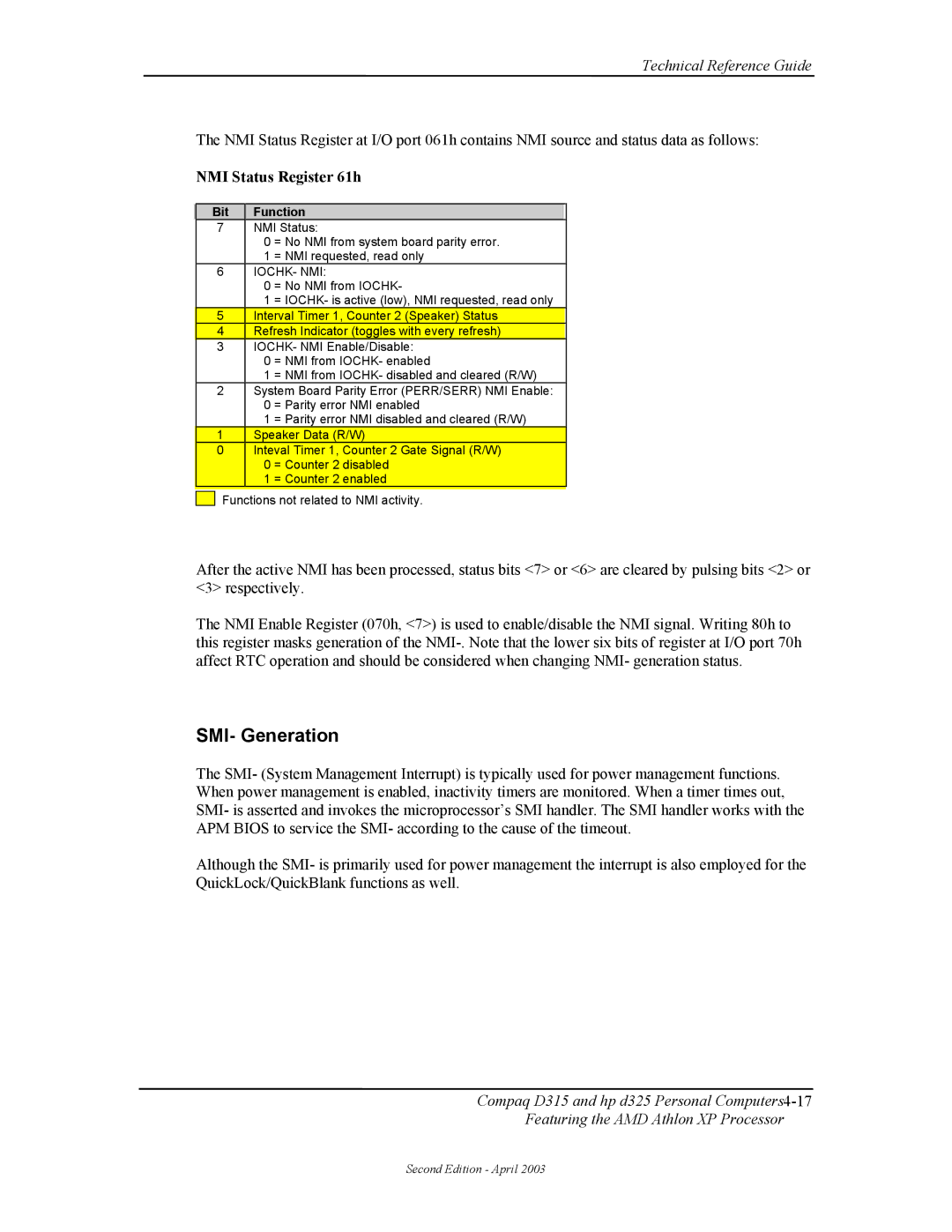
Technical Reference Guide
The NMI Status Register at I/O port 061h contains NMI source and status data as follows:
NMI Status Register 61h
| Bit | Function |
| |
| 7 | NMI Status: |
| |
|
| 0 | = No NMI from system board parity error. |
|
|
| 1 | = NMI requested, read only |
|
| 6 | IOCHK- NMI: |
| |
|
| 0 | = No NMI from IOCHK- |
|
|
| 1 | = IOCHK- is active (low), NMI requested, read only |
|
5Interval Timer 1, Counter 2 (Speaker) Status
4Refresh Indicator (toggles with every refresh)
3IOCHK- NMI Enable/Disable:
0 = NMI from IOCHK- enabled
1 = NMI from IOCHK- disabled and cleared (R/W)
2System Board Parity Error (PERR/SERR) NMI Enable: 0 = Parity error NMI enabled
1 = Parity error NMI disabled and cleared (R/W)
1 | Speaker Data (R/W) |
0Inteval Timer 1, Counter 2 Gate Signal (R/W) 0 = Counter 2 disabled
1 = Counter 2 enabled
Functions not related to NMI activity.
After the active NMI has been processed, status bits <7> or <6> are cleared by pulsing bits <2> or <3> respectively.
The NMI Enable Register (070h, <7>) is used to enable/disable the NMI signal. Writing 80h to this register masks generation of the
SMI- Generation
The SMI- (System Management Interrupt) is typically used for power management functions. When power management is enabled, inactivity timers are monitored. When a timer times out, SMI- is asserted and invokes the microprocessor’s SMI handler. The SMI handler works with the APM BIOS to service the SMI- according to the cause of the timeout.
Although the SMI- is primarily used for power management the interrupt is also employed for the QuickLock/QuickBlank functions as well.
Compaq D315 and hp d325 Personal
Featuring the AMD Athlon XP Processor
Second Edition - April 2003
